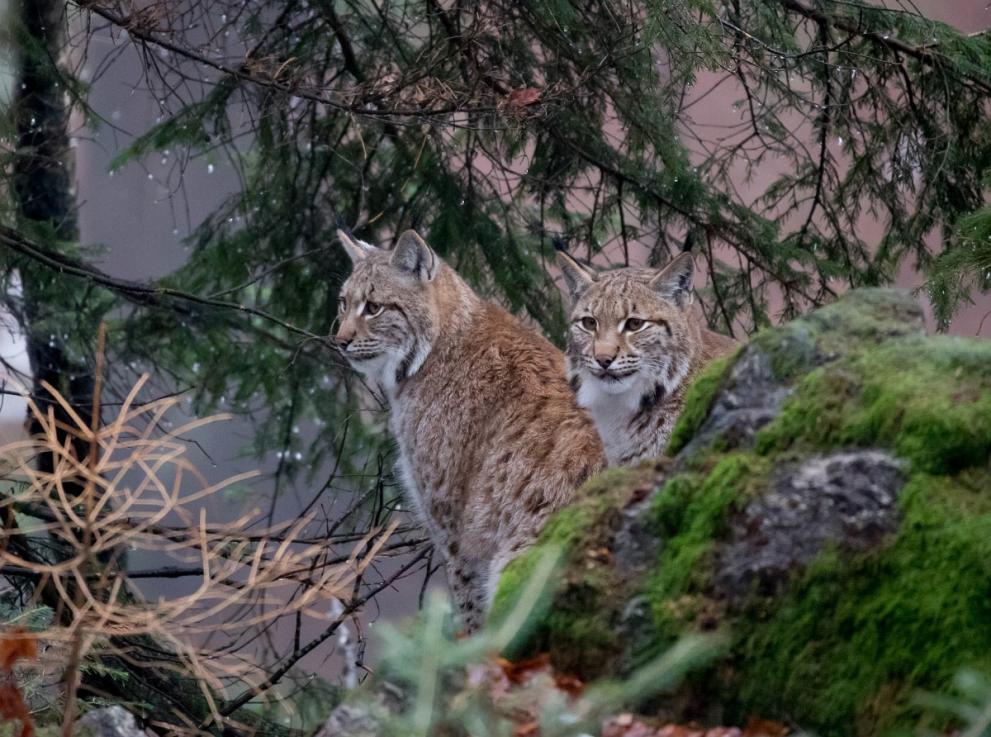
Implementation: 2019 - ongoing
Member State: Austria
Contact: Tourist information offices info mostviertel [dot] at (Lower Austria), reichraming
mostviertel [dot] at (Lower Austria), reichraming steyr-nationalpark [dot] at (Upper Austria), info
steyr-nationalpark [dot] at (Upper Austria), info gesaeuse [dot] at (Styria)
gesaeuse [dot] at (Styria)
More information: Website: Luchstrail
Target species: Lynx
Introduction:
In Austria, lynx populations are rather small and can be divided into one population at the Austro-German-Czech border (60 to 80 lynxes in total) as well as a second population in the national park Kalkalpen (consisting of 6 confirmed lynxes in 2018). The long-distance trail of the lynx aims to raise awareness about the lynx, promote its acceptance and protection (it is connected to the lynx monitoring) as well as generate local revenues through sustainable ecotourism and related merchandise of lynx products (hiking map, trail souvenirs). It was developed by ARGE Luchs-Trail (Consortium on the lynx trail), which was founded as collaboration between the protected areas and regional tourism associations. Municipalities and alpine associations are also partner of the trail and responsible for the maintenance of the trails. Landowners such as several forestry administrations or private persons along the trail, have also been involved and cooperate on letting the hikers trespass their land. The trail was inaugurated in autumn 2018.
Key actions:
- Locating the trail in central Austria, also named Austria’s ‘wild midway’, to lead through natural forests inhabited by the large carnivore specie in Austria
- Trail planning along 220km to comprise 11 daily stages and to connect three protected areas (the national parks Kalkalpen and Gesäuse as well as the wilderness area Dürrenstein)
- Creating a website providing an interactive map and detailed information on the daily stages, their walkability, accommodations, as well as further recommendations for the tour
- Facilitation for visitors planning the hiking tour either individually or as a booked tour including baggage transfer
- Designing thematic tours encompassing different parts of the trail including wildlife sighting activities with national park rangers to be booked via a platform
Results:
The federal states along the trail were among those with highest increases during the summer 2019 season (April to October) which was the trail’s first season. Hiking constituted the main activity for 47% of summer tourists in 2019. 50 hikers booked one of the tour packages offered via the platform, spending on average 6 days on the trail and € 105 per day. The number of self-organised hikers is unknown, yet, accommodation providers along the trails report a significant increase. The lynx trail also received a wide media response from ecotourism magazines and newspapers in Austria and Germany as well as other European countries. The project can be considered a pilot project of ecological use of the alpine regions.
Financing:
The project is financed through national and state funding, and also was selected to be co-funded by LEADER and ecoplus regional development. Investment costs have been estimated at 44.936,00 € (LEADER funding: 31.455,20 €).
Sources
Details
- Publication date
- 7 November 2023
- Author
- Directorate-General for Environment

